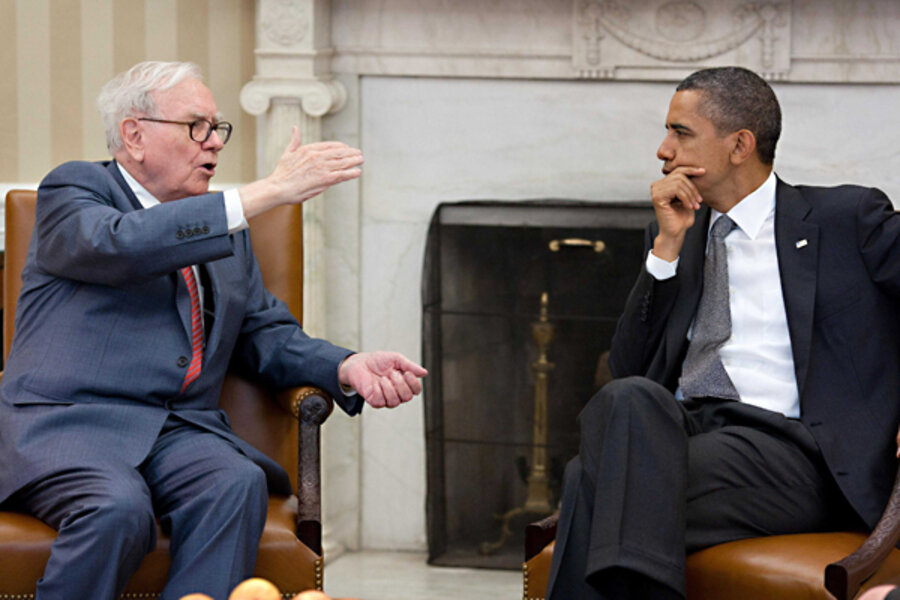Buffett rule: All about capital gains
Loading...
President Obama didn’t quite get around to saying so when he rolled out his latest deficit reduction plan on Monday, but his Buffett Rule—that no one making more than $1 million should pay a lower tax rate than those in the middle-class—is mostly about investment income.
On average, high income people do pay significantly higher tax rates than those lower down the economic food chain. New estimates by my Tax Policy Center colleagues show that the tax code is, overall, quite progressive. For instance, those making $10,000 to $20,000 pay on average about 1 percent of their income in federal taxes. Those making $75,000 to $100,000 pay an average effective tax rate of about 17 percent, and those who making more than $1 million pay 29 percent. (Tax geek note: TPC includes income, payroll, and estate taxes. It also allocates all corporate income tax payments to owners of capital).
So what’s Obama’s problem? His objection—and Buffett’s—is not with rates paid by the average taxpayer who makes a million dollars or more a year (and, yes, I did smile when I wrote that). Rather it is with those in this group (whose income averages about $2.9 million) who make most of their money from investments.
To see what’s going on, let’s crank up the microscope even more. Look at the very highest income taxpayers—the 0.1 percent who make an average of almost $7 million annually. Typically, they pay about 29 percent of their income in taxes, nearly twice what middle-income earners pay.
But as my colleague Bob Williams described so well in a TaxVox post a few weeks ago, a few of those very high earners make more than two-thirds of their income from capital gains and dividends, which are taxed at just 15 percent. Thanks to those low rates and the astute use of some other tax breaks, they pay very low combined income and payroll tax rates.
What could Congress do to make sure those investors at the tippy-top of the income scale pay more tax? Not much point in raising their rates on ordinary income to the pre-2001 levels of 39.6 percent since they don’t make much of their money on wages and salary.
And scaling back popular tax subsidies for, say, mortgage interest and employer-sponsored health insurance won’t help alot either. Those tax breaks really benefit the upper middle class and the merely rich, not the Buffetts of the world (after all, you can only get so much gold plating on your health insurance and the mortgage deduction is already capped at $1 million). The big guys do benefit from big charitable deductions, however.
That leaves the tax treatment of investments. The chairs of Obama’s fiscal commission, Erskine Bowles and Alan Simpson, would raise capital gains rates even as they cut rates on ordinary income. So would the Bipartisan Policy Center.
Even GOP presidential hopeful Mitt Romney sees the problem—though through a very different lens than Obama. While Romney would drop the rate on gains and dividends to zero for most taxpayers, those making more than $200,000 would still have to pay at 15 percent. I suspect he realizes zeroing out investment taxes for all would be a tough sell for both revenue and distributional reasons.
And there is one important unanswered question about those high-income investors: Just how much tax have they indirectly paid on capital that may not be captured in current estimates? TPC is working through that one and hopes to have an answer soon. It may be a lot but keep in mind that Buffett didn’t count it, and the Internal Revenue Service can’t track it.
Whether you think those very high-income investors are job creators or merely fat cats who aren’t paying their own way (or perhaps both) is up to you. But whatever you think of them, you ought to know what Obama’s Buffett Rule is really about.
For another view of the Buffett Rule, see Bill Gale’s post .





